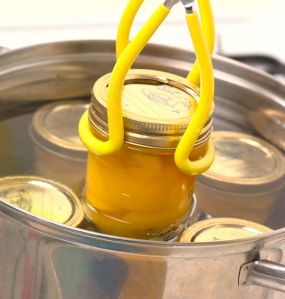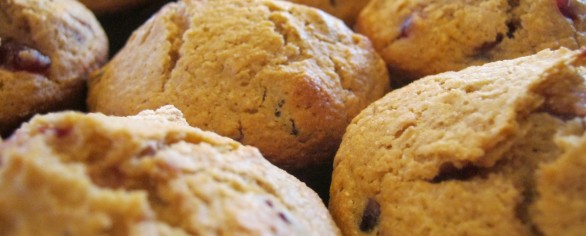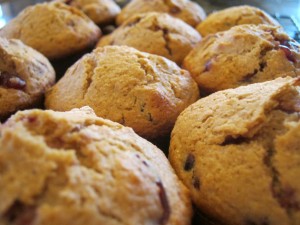You know that phrase made famous by the Vikings in the Capital One commercial? “What’s in Your Wallet?” – Well, let me ask: “What’s in YOUR Fridge?”
On any given day that may be a scary question for some – but for most of us after  Thanksgiving, it’s not only scary, it’s a downright daunting and overwhelming question!
Thanksgiving, it’s not only scary, it’s a downright daunting and overwhelming question!
The answer is a resounding LEFT OVERS!
When faced with a myriad of foods that you don’t normally eat during the year, left in odd amounts hiding or sliding around after Thanksgiving, some of us may be tempted to toss the left over food, given the turkey coma we have just induced. But do not despair… There are many things you can do with left over Thanksgiving goodies so you won’t waste your food budget by feeding it all to the dog.
Mashed Potatoes:
Portion them out into one cup servings, into baggies and freeze. When you need to thicken a soup, top a pot pie or simply have a quick side dish (seasoned with cheese, chives, garlic, etc) – these are quickly thawed and used.
Sweet Potato Casserole:
Portion this out into one half cup servings, into baggies and freeze. These make great additions for muffins and can be added in to winter squash soups. Again they are a stand alone side dish at a far later date.
Green Bean Casserole:
Given that this is usually laden with mushroom soup and fried onions – it usually doesn’t keep well for too long. Plan on tossing this into your turkey pot pie as an added green veggie and cream soup base. The onions will soften and blend with the other ingredients…no one will know that you used it there.
Cranberry Relish/Jelly:
Also another great add-in for muffins. It turns your muffins a sweet pink and you don’t have to add as much sugar as the usual recipe.
Turkey:
I’m not sure why we always have way more turkey than I think we will. After days of turkey sandwiches – it’s still HERE! So here are some thoughts…
Break the bones with the meat on them, boil and make broth that can be frozen or canned.
Then de-bone all the meat you can glean (we ended up with a gallon bag of bits) and make any number of things such as turkey and rice soup, turkey pot pie, turkey salad for wraps or sandwiches, turkey tacos (use taco seasonings), turkey barbeque on a whole wheat bun. Yes, all of these are on the menu for the next few weeks at our home. Simply label and freeze portion sizes to make the specific meal.
Once you’ve tended to the left overs and they are in their proper place (not hiding in the fridge or trashed) you can move on to some more ‘normal’ meals and enjoy the fact that you can give Thanks for having this other food on hand!
 Donna Miller is a teacher, author, sought-after speaker and trainer. She has been a both guest and host on internet and broadcast radio talk-shows and in television interviews. She enjoys teaching online and local classes & ladies retreats for people to learn whole food cooking, budget friendly techniques and preparedness skills. Donna is happily married and has three adult children, and a daughter in-law. She and her husband (Joseph) are the founders of both Millers Grain House , Your Preparation Station and are on the board of PREPARE Magazine.
Donna Miller is a teacher, author, sought-after speaker and trainer. She has been a both guest and host on internet and broadcast radio talk-shows and in television interviews. She enjoys teaching online and local classes & ladies retreats for people to learn whole food cooking, budget friendly techniques and preparedness skills. Donna is happily married and has three adult children, and a daughter in-law. She and her husband (Joseph) are the founders of both Millers Grain House , Your Preparation Station and are on the board of PREPARE Magazine.
Home  Canning has been around for far longer than our store-bought canned products of today. It is an old skill that is making a come back during these tougher than normal economic times. And why not? Buying fresh foods and learning how to make them last long into the next few seasons is often the most economical way to eat without attempting to live off of preservative laden boxed mixes.
Canning has been around for far longer than our store-bought canned products of today. It is an old skill that is making a come back during these tougher than normal economic times. And why not? Buying fresh foods and learning how to make them last long into the next few seasons is often the most economical way to eat without attempting to live off of preservative laden boxed mixes.
The history of canning can be traced back as far as Napoleon Bonaparte in the 18th century. He experimented for over 15 years and finally realized that if food is sufficiently heated and sealed in an airtight container, it would not go bad. Wine was among his very first commodities to attempt to preserve in this manner. I mean, priorities are priorities, right?
Although this skill may seem a bit old fashioned it is gaining new ground as grocery prices rise. Men and Women from their 20’s to their 60’s are learning this fine art of food preservation. It is as safe as it is ‘green’ (earth friendly). The cans are reusable glass and do not leach BPA into the food like the white lining of the commercial cans do. Even the lids don’t have to be tossed if you purchase the Tattler Lids (also BPA free). This is much better on our environment and our bodies.
The difference between water bath canning and pressure canning is easily determined by the acidity of the food. There are several good (and reasonably priced) books to help you know which method to use and how long to process the food. There are also tools of the canning trade that you can get for less than you may think, making the home canning process an old skill that will help you stretch your food bill for seasons to come.
With a little practice, you can easily both pressure can or water bath can almost every single food you may need. The food then stores for years without the aid of electricity.
If I can can – then you can can – we can all can!
Blessings and enJOY the journey!
Have you ever faced the end of a holiday season and had an overflow of foods that are usually not eaten through out the year? We face this after almost each holiday and ti forces me to become creative to avoid wasting food.
Usually, I clean out the refrigerator a little each week, but after a holiday – this required some serious attention. Weekly refrigerator cleaning is key to stretching the grocery dollars.
Although usually my focus is on whole wheat , the truth is that although whole grains are a great base for a healthy and frugal grocery budget, they are not alone on the menu. Learning to make the most of each ingredient, fresh, frozen, or otherwise will help make the most of your groceries and help them to stretch giving you more life for your dollar.
We hope you enjoy the video and subscribe. There are more ideas to prolong the life of your food in the remainder of the series.
 Last week I began my show on choosing, using and storing healthy oils only to discover 3 minutes before the show was to end that my microphone was muted. Needless to say, this is now the topic of the upcoming radio show!
Last week I began my show on choosing, using and storing healthy oils only to discover 3 minutes before the show was to end that my microphone was muted. Needless to say, this is now the topic of the upcoming radio show!
Choosing, storing and using healthy oils is the key to making good choices in your diet. Your health is not only affected by the type of oil you choose, but also how you use it. Over heating can actually turn a good fat into a bad fat (trans fat). Storing oil is also vital to making sure you don’t get sick by using oil that has gone rancid.
Fat and oil have gotten a bad wrap over the years. The truth is that not all fats are created equal. Your brain, your hair, your skin and your arteries need healthy oils and healthy fat to function properly. The key is learning what choices to make and what to stay away from.
I will share with you a bit more information about healthy oils! Some of the topics that will be touched on are:
- What are the smoke points of oils and why is that important information?
- Should you worry about the fat content and type?
- Decipher single chain, Mono-Unsaturated Fatty Acids.
- Is there such a thing as a healthy saturated fat?
- How to spot ‘impostor olive oil’ in the grocery isle.
- What about the spray oils or non-stick sprays?
Stop by our Facebook Page if you have specific questions about this topic and leave a comment/question.




